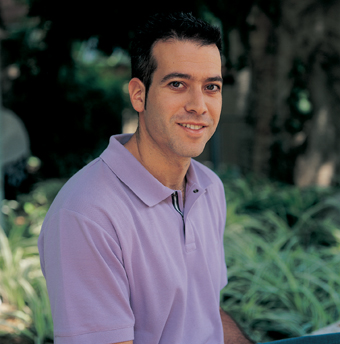Are you a journalist? Please sign up here for our press releases
Subscribe to our monthly newsletter:

Cancer can disappear, only to return at a later date – often in a more aggressive form. Scientists now believe this is due to the survival of small numbers of cancer stem cells – self-renewing cells that can jumpstart new cancer growth. A Weizmann Institute scientist, working with researchers at Stanford University, recently revealed a genetic program that cancer stem cells share with embryonic stem cells, endowing them with cancer-instigating properties.
Stem cells come in different versions, including the embryonic stems cells that give rise to all of the tissues in a developing embryo and the various kinds of adult stem cells that replenish the blood, skin or muscles. But what gives stem cells their “stemness”? Researchers looking at the activities of specific genes had come up with conflicting evidence: Many genes seem to act differently in different studies. Dr. Eran Segal of the Institute’s Computer Science and Applied Mathematics Department, Dr. Howard Chang of Stanford University and their colleagues realized that a method was needed to investigate whole groups of genes – which rarely act alone in nature – at once.
To explore these gene sets, or “modules,” the scientists used software called “Genomica,” developed by Segal and his team at the Institute, to map out patterns of gene activity in embryonic stem cells and adult stem cells, looking for common themes. They then compared their results to data sets on cancer stem cells to see if these cells used a similar program for activating sets of genes. The researchers also examined data on metastasis and survival rates in cancer patients, to check for correlations between the presence of cancer stem cells and prognosis.
Their computations showed that the patterns of gene activity in cancer stem cells closely resemble those of embryonic stem cells, and the results confirmed that their presence can spell bad news for cancer patients. The scientists then asked whether their findings might also reveal the workings of a “master gene” – one that sets the whole stem cell program in motion. Of a number of candidates for this position, one stood out: a gene called c-Myc that is known to be involved in the growth of cancer.
Is c-Myc a main culprit? To find out, the team injected human skin cells with elevated c-Myc activity into healthy mice. They found that this gene, alone, was able to turn the cells into embryonic stem-cell-like cancer cells. As few as 500 cells were enough to initiate cancer growth. “C-Myc may have a positive role to play in embryonic development,” says Segal, “but in cancer, it can be lethal.”
The findings may have a number of biomedical applications. They may enable cancer researchers, for instance, to create lines of genetically engineered cancer stem cells for research, as well as aid in the design of better diagnostic tools and, in the future, treatments that might keep cancer from recurring or spreading.
Dr. Eran Segal’s research is supported by the Willner Family Leadership Institute; the Abisch-Frenkel Foundation for the Promotion of Life Sciences; the Chais Family Fellows Program for New Scientists; the Hana and Julius Rosen Fund; the Arie and Ida Crown Memorial Charitable Fund; the Estelle Funk Foundation; and the Cecil and Hilda Lewis Charitable Trust. Dr. Segal is the incumbent of the Soretta and Henry Shapiro Career Development Chair.